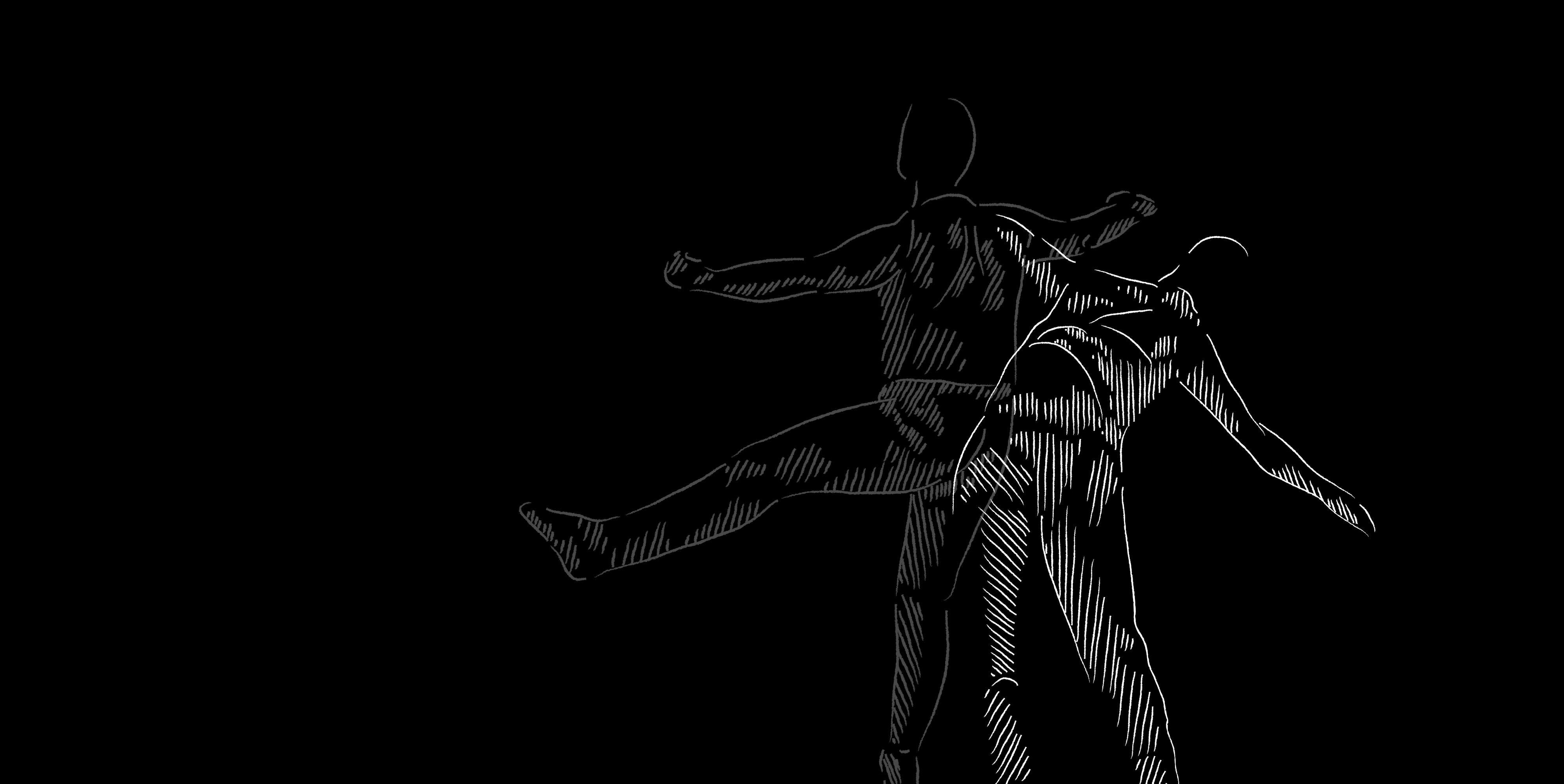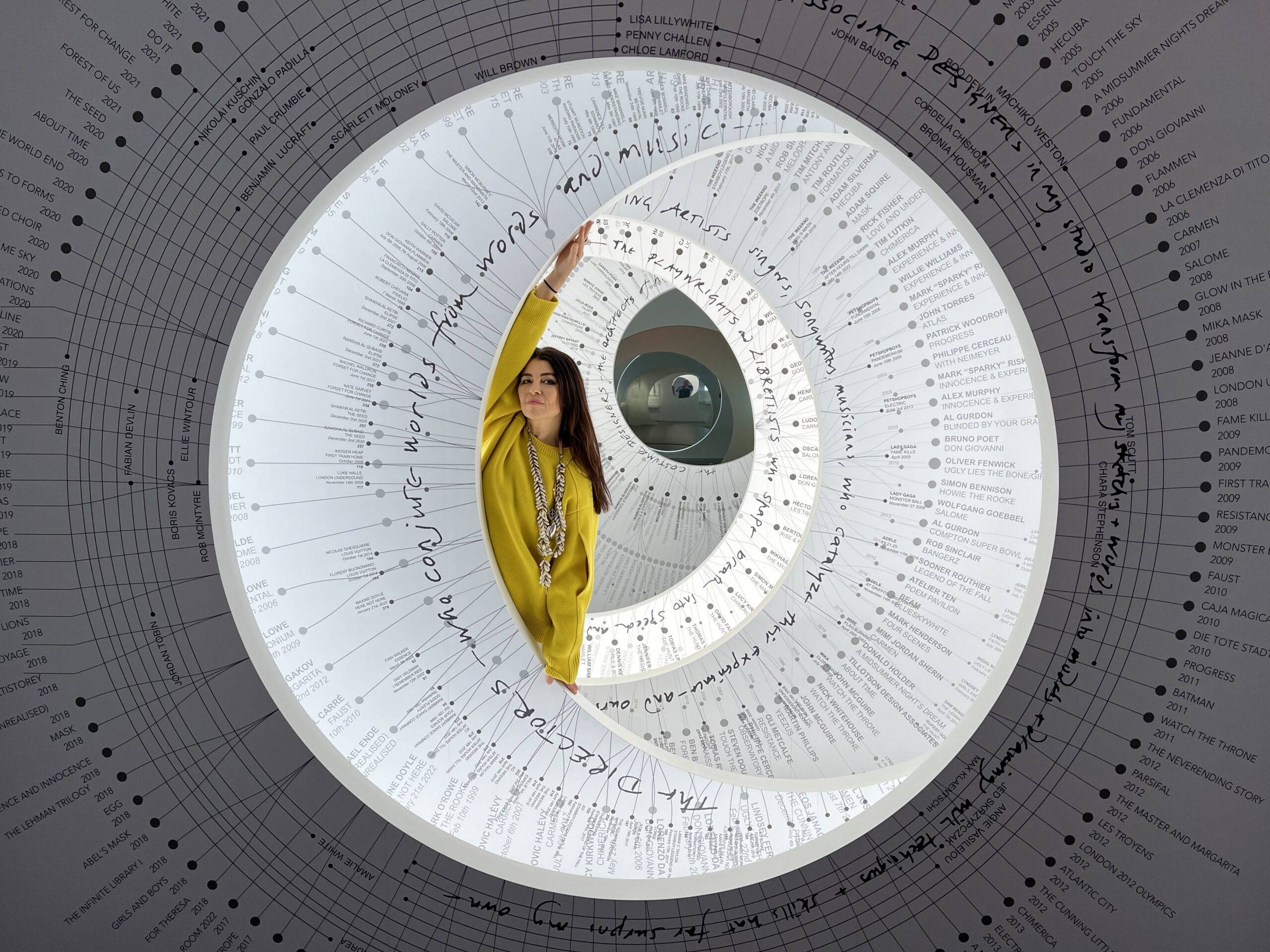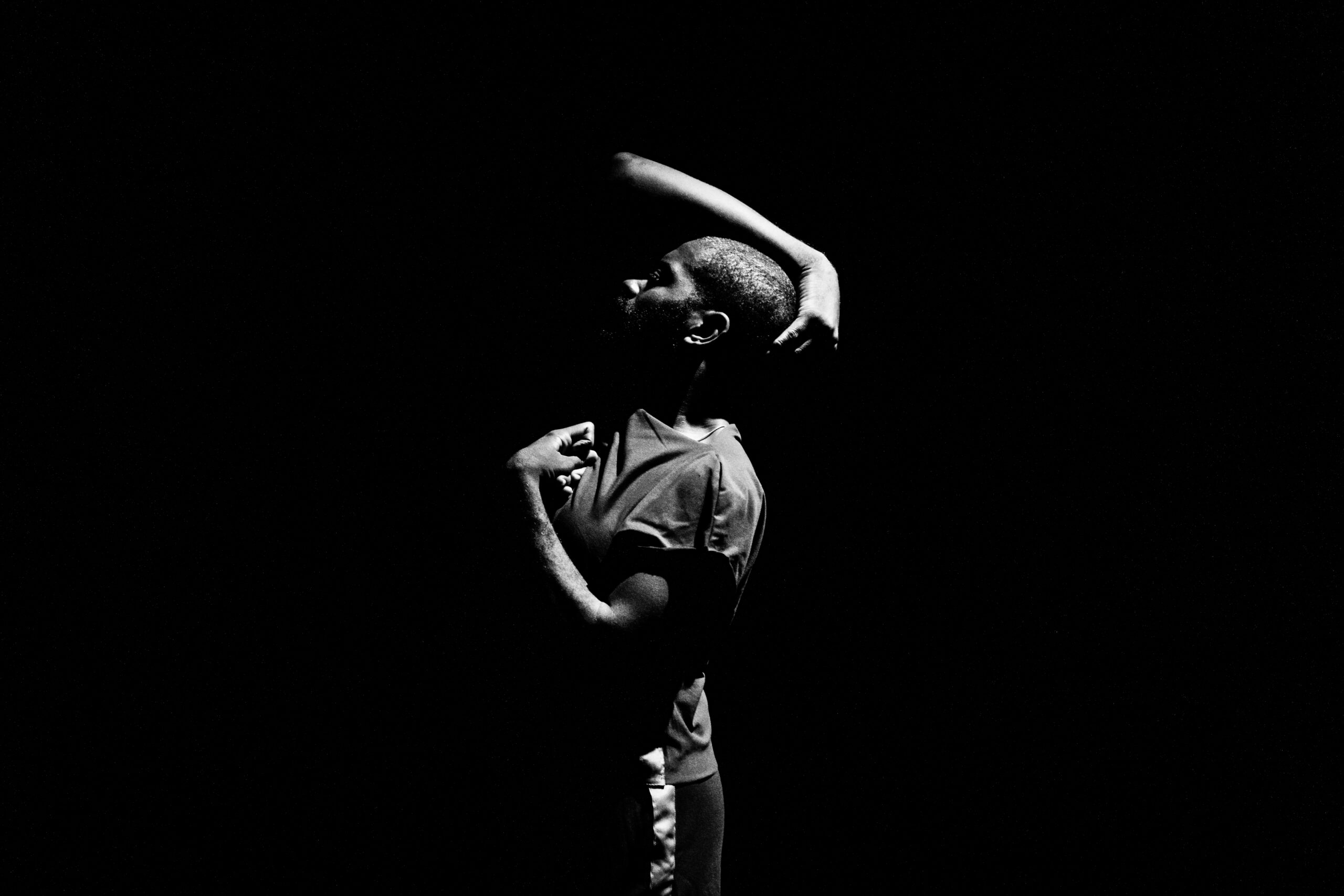APRIL: IDEATION & ITERATION

Es Devlin begins each project with a blank sheet of paper, often sketching in response to a song lyric or a line from a poem. She informs her ideas by devouring books, theater, art, music, and poetry—the work of others is a great influence. As she shares, “An idea is only ever part of a continuum of thought.” She iterates to explore, refine, and tweak ideas. Revisions clarify an idea or respond to collaborator feedback. The final forms of Devlin’s work, whether for a performance or installation, are held up by the rigor of constant ideating and iterating.
Sometimes it may feel daunting to approach a blank page. Yet ideas can germinate anywhere—from books you read; in others’ creative practices; from walking in nature. Iterating on an idea allows you to further open to possibility. What new ideas might be elicited by revisiting something from a different vantage point? How can tweaking an approach or idea help to refine it? The exercises and materials on this page encourage you to explore different ways to ideate and iterate in your own life.
Table of Contents
- Prompts: Quick writing or visual activities
- Exercises: Activities that might ask you to spend a little more time
- Related Reading: Highlights from Cooper Hewitt, Smithsonian Design Library
- Programs: Exhibition tours, lectures, and hands-on workshops for visitors at all age and experience levels
PROMPTS
Coming up with new ideas—and then holding onto them so they can further evolve—can be a daunting creative challenge, no matter the context or field. Use the prompts below as quick exercises to unlock your creative thinking. They are geared toward ages 15 and up, but all are welcome to try them out!
The only materials you need are a pencil, a piece of paper, and a camera, but feel free to play with other supplies you may have on hand.
finding the right mindset
1. Sensory awareness
Having trouble getting started on a creative problem? Ideating can sometimes be intimidating or overwhelming. Feeling safe, calm, and present can help your mind open to new ideas without judgment. Ground yourself where you are and calm a busy mind by trying a sensory awareness activity:
First, take five deep breaths.
Then, look around and silently name four things you can see right now.
Name three things you can touch right now.
Name two things you hear right now.
Name one thing you can smell right now.
Reflect on how you feel after tuning into your senses. With your mind settled, return your thoughts to the creative challenge or project at hand.
2. Non-time
Give yourself “non-time”—uninterrupted time to let your brain wander. Sometimes when we feel a creative block it means we need a break from the work that needs to be done. Shut off your screen, turn away from your to-do list, and put down your pen or pencil. You may have heard of getting a eureka moment in the shower, but it does work! When you release your brain from the tyranny of productivity and give uninterrupted time to let your mind wander, inspiration may strike. Go for a walk, organize your space, draw or read, listen to music, talk to a friend or co-worker, or, perhaps, take a shower!
3. Morning pages
Tap into your creativity before your critical faculties sharpen in the glare of the day’s sun. Upon rising, write down your first thoughts of the day in a journal or notebook without censoring what comes through your pen. Give yourself a time limit, or write for as long as it takes to fill three pages.
4. New perspectives
Shake up your daily routine to generate new insights and spark unexpected thoughts or encounters—take a different path to work, try a new coffee shop, or change the order of your morning routine. Consider going without headphones to immerse yourself in your surroundings and be fully present, or, do the opposite. Listen to an album that’s new to you or find a new podcast as you go about your altered routine.

EXERCISES
Exercises are activities that might ask you to spend a little more time or to gather and play with some additional materials.
ITERATIVE PRACTICE
Iteration is the act of revisiting an idea or version of a project. It enables designers and artists to tweak and refine work to improve a creation, discover a new entry point, or to explore a different approach.
For this exercise, begin by identifying a subject you can draw or photograph multiple times—this could be a favorite object, your bedroom or living space, a tree outside your window, a friend or family member, or a pet. Draw or take a photo of your subject. Then, draw or take another photo of the same subject, revisiting it 8, 10, or even 15 times. Can you commit to drawing or taking photographs of the same subject consecutively each day, or every Tuesday, or every other evening, or over the course of a full day?
Think about how you can iterate on your previous drawing or photo. Look at your subject from afar, up-close, or at a different angle. Refine or tweak a new detail. Observe something new or capture it in a different way than you did prior.
Here are some parameters you could explore as you iterate:
- Set a time limit for how long you spend observing and capturing your subject.
- Capture your subject at the same time each day, or at different points of the day. How does the shift in natural light impact your drawing or photo?
- Change the perspective of your subject.
- If you are drawing, consider using different mediums, or change the types of lines and textures you use.
- If you are taking a photo, try playing with different camera lenses or lighting.
Here are some ways to revisit different subjects:
Focus on an object:
Sometimes it can be tricky to come up with multiple ways to capture a static object. Consider how the texture and color of an object changes from up-close to afar. Think about parts of an object you can and cannot see by looking at it from different angles. Does it visually change your perception of the object, its function or purpose?
What’s outside your window:
What changes outside your window day to day, and what usually stays the same? Observe how static objects and structures interact with or appear differently in natural elements or in natural light. You could capture everything you see outside your window, or maybe each day you zoom in and focus on one part of your view.
Connect to nature:
Connect to the natural world by tuning into its constant change. Identify a single tree or plant. This could be a potted plant in your home or a tree in your neighborhood that you walk past each day. Observe its size, the shape and texture of its leaves, its color. Visually document changes in the plant over time—how do its leaves shift or change?
Play with portraiture:
A self-portrait can sometimes feel confrontational, but it’s a great way to learn more about yourself. You could capture yourself in different moods throughout the day, almost acting as a visual diary. Or, try drawing blind portraits of yourself without looking down at your paper. If you are taking a photo, play with different lenses on your phone or capture yourself through various reflective surfaces. Contemplate how facial expressions or body positioning and movement also change your portrait.

RELATED READING
FROM Cooper Hewitt, Smithsonian Design Library
Cooper Hewitt, Smithsonian Design Museum’s Library houses over 15,000 titles of rare books and special collections including children’s illustrated books and pop-up books. Pop-ups apply paper engineering, the process of manipulating and creating intricate paper designs. While turning pages, images pop, or a reader can pull and turn or even see optical illusions.
The Library’s pop-up collection holds many traditional fairy tales and children’s books. Showcased here are four iterations or re-tellings of the story of Cinderella, a servant girl with two terrible stepsisters and an evil stepmother. Each of these books originates with a different publisher and paper engineer:
- Cinderella fairy tale pop-up book. Published circa 1970.
- Cinderella: The Story of Cinderella, retold by Albert G. Miller; designed by Paul Taylor; illustrated by Jon Dahlstrom. Published in New York by Random House, circa 1970.
- Cinderella, illustrated by Vojtěch Kubašta. Published in Leicester, England by Brown Watson, circa 1981.
- Walt Disney’s Cinderella. Published in New York by Windmill Books, circa 1981.
Observe how the storytelling differs visually across the four versions. How are each of the characters portrayed? How do the illustration styles in each book impact the story? What parts of the story did the book artist underscore in their illustrations? How does the paper engineering highlight a scenic element or contribute to the storytelling?

Past PROGRAMS
Cooper Hewitt hosts a range of programs—including exhibition tours, lectures, hands-on workshops, and others—for visitors at all age and experience levels.
Learn more about upcoming programs at Cooper Hewitt.

6:30 p.m. to 8:00 p.m. ET
Cooper Hewitt, Smithsonian Design Museum
2 E 91st St
New York, NY 10128

1:00 p.m. to 6:00 p.m. ET
Cooper Hewitt, Smithsonian Design Museum
2 E 91st St
New York, NY 10128
